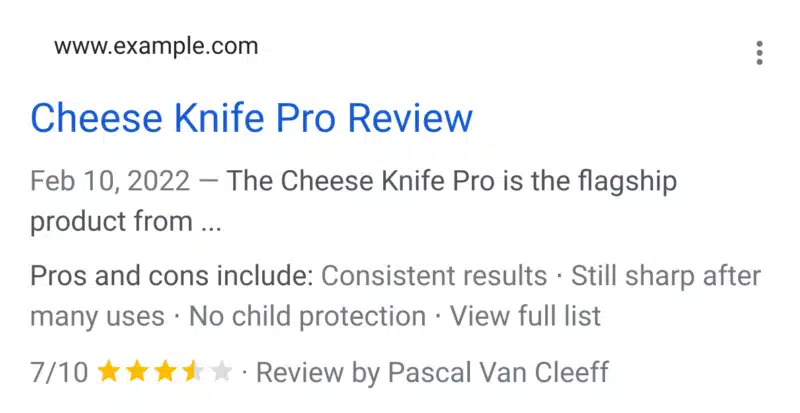Google adds structured data support for pros and cons on product markup
Even if you don't use this markup, Google may still show pros and cons in the product search result snippets.
Google has added structured data support to read and potentially use pros and cons for product review snippet in the Google Search results. Google said you can now “tell Google about your pros and cons by supplying pros and cons structured data on editorial review pages.”
Pros and cons look like. Here is a screenshot of pros and cons showing in the Google Search results snippets:

Documentation. Google added a new section to the documentation over here that reads “Pros and cons: Help people see a high-level summary of the pros and cons of an editorial product review. The pros and cons appearance is available in Dutch, English, French, German, Italian, Japanese, Polish, Portuguese, Spanish, and Turkish in all countries where Google Search is available. While Google tries to automatically understand the pros and cons of an editorial product review, you can explicitly provide this information by adding the positiveNotes and/or negativeNotes properties to your nested product review. Be sure to follow the pros and cons guidelines.”
You can see sample code over here.
Test tool. Google updated the Rich Results Test to check for pros and cons structured data in addition to all the other structured data types supported by Google Search, the company said. Google said you can use this tool to validate and confirm your structured data is proper and Google can read it.
Guidelines. Google added that if you add pros and cons structured data, you must follow these guidelines:
- Currently, only editorial product review pages are eligible for the pros and cons appearance in Search, not merchant product pages or customer product reviews.
- There must be at least two statements about the product. It can be any combination of positive and/or negative statements (for example, ItemList markup with two positive statements is valid).
- The pros and cons must be visible to users on the page.
Structured data not required. Google said even if you do not add structured data, Google may still show pros and cons. I actually spotted this about a month ago in the wild. Google wrote, “If you do not provide structured data, Google may try to automatically identify pros and cons listed on the web page.”
Google did say it “will prioritize supplied structured data provided by you over automatically extracted data.” So it is probably best you do add the structured data, if you have it.
Why we care. Anything you can do to improve your click-through rate from Google Search to your website is a good thing. Adding more elements and rich results to your search snippet may help you improve clicks. So give it a try and test it out.
Related stories